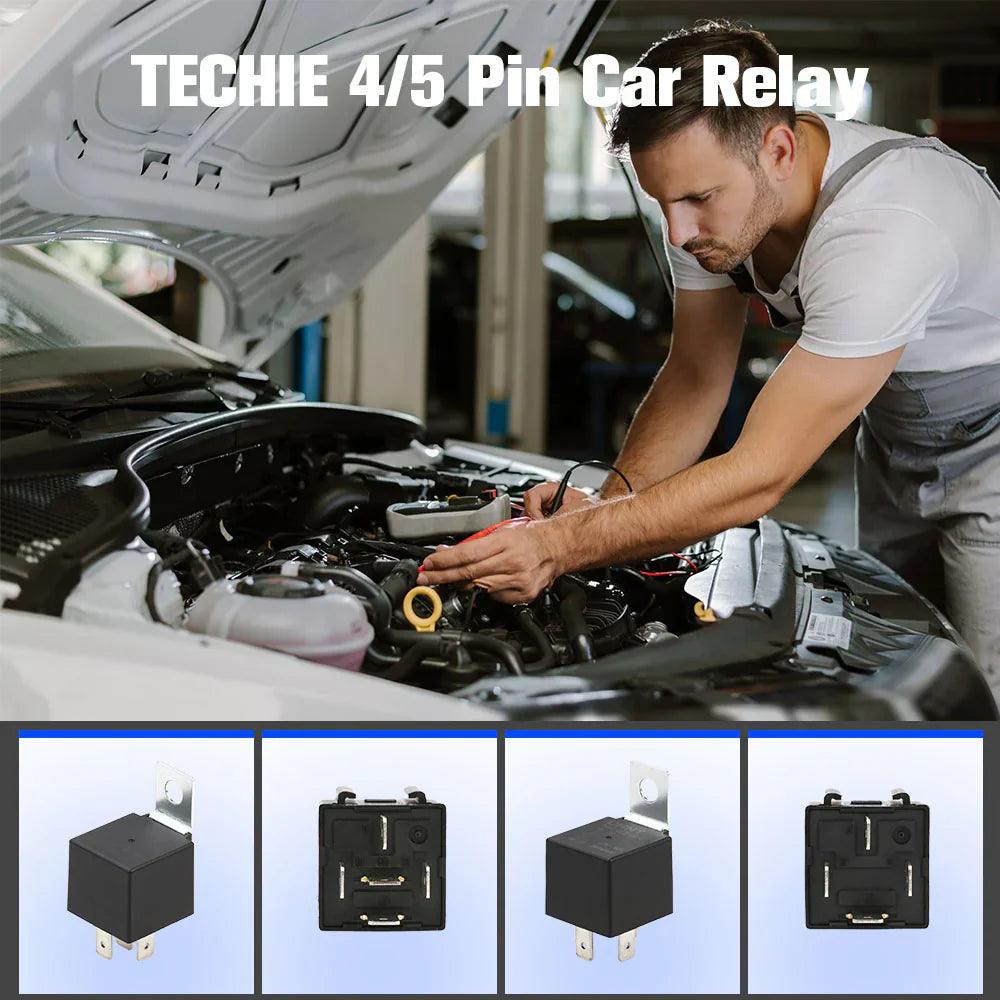Automotive Relays: The Intelligent Switches in Your Vehicle's Electrical System

Introduction: The Critical Role of Relays
Every time you turn the key to start your car or activate accessories like headlights and AC, there's a small but crucial component working behind the scenes - the automotive relay. These compact devices serve as "intelligent switches" in your vehicle's electrical system, allowing small control currents to manage large power circuits while protecting sensitive electronics.
For car owners, understanding relays can prevent minor issues from becoming major repairs. For technicians, quick relay diagnosis can significantly improve repair efficiency. This guide explores relay operation principles, common failure symptoms, real-world repair cases, and recommends quality options like Techie brand relays.
Core Principle: How Small Currents Control Large Loads
Relays operate on electromagnetic principles:
-
Control Circuit - Receives low-current signal (typically 12V) from ECU or switches
-
Electromagnet Activation - Current through coil creates magnetic field
-
Contact Closure - Connects high-current circuit (up to 30-40A)
-
Load Operation - Powers devices like headlights or cooling fans
Key Data:
-
Quality relays achieve over 100,000 cycles (Source: ISO 7588 Standard)
- Modern vehicles use 15-20 relays on average (Source: SAE International)
Main Types of Automotive Relays
1. By Contact Configuration
-
Normally Open (NO) - Closes when energized
-
Normally Closed (NC) - Opens when energized
-
Changeover - Combines NO/NC functions
2. By Application
| Type | Typical Use | Current Rating |
|---|---|---|
| Mini Relay | Light controls | 10-20A |
| Standard Relay | Fan controls | 20-30A |
| High-Power Relay | Starter motor | 100-200A |
Professional Tip: For critical applications like AC compressors, consider Techie Premium Series relays with silver-alloy contacts for improved durability.
7 Common Symptoms of Relay Failure
Watch for these warning signs:
🔧 Complete function failure - Non-working lights or AC
🔧 Intermittent operation - Works sometimes, may respond to tapping
🔧 Clicking sounds - From arcing or pitted contacts
🔧 Frequent fuse blows - Caused by welded contacts
🔧 Excessive heat - At control terminals indicates coil issues
🔧 Burning smell - From overheated plastic housing
🔧 Related DTCs - Such as P0645 (AC clutch relay circuit)
Case Study: Mysterious Engine Shutdown
A 2018 Volkswagen Tiguan experienced random stalling. Diagnosis revealed oxidized contacts in the fuel pump relay. Installing a Techie Environment-Resistant Relay solved the problem, thanks to its superior contact materials.
5 Maintenance Tips for Longer Life
-
Clean relay sockets - Prevent oxidation buildup
-
Avoid overloading - Don't exceed rated current
-
Use appropriate types - Select relays suited to environment
-
Observe mounting - Some require specific orientation
-
Seasonal checks - More important in humid conditions
Industry Insight: Approximately 35% of electrical faults relate to relay systems, with 70% preventable through proper maintenance (Source: Automotive Service Association)
Selecting Quality Relays
Consider these factors:
✅ Contact material - Silver-alloy preferred
✅ Environmental rating - Match to installation location
✅ Certifications - ISO 7588 compliant
✅ Brand reputation - Established manufacturers like Techie
✅ Correct specification - Match OEM part numbers
Innovation Spotlight: Techie Smart Relays incorporate diagnostic capabilities for advanced vehicle systems.
Small Component, Big Impact
Though often overlooked, relays play vital roles in modern vehicles. Whether you're a troubleshooting owner or diagnosing technician, understanding relays leads to faster, more effective solutions.
Share your relay experiences in the comments! 💡🚗
